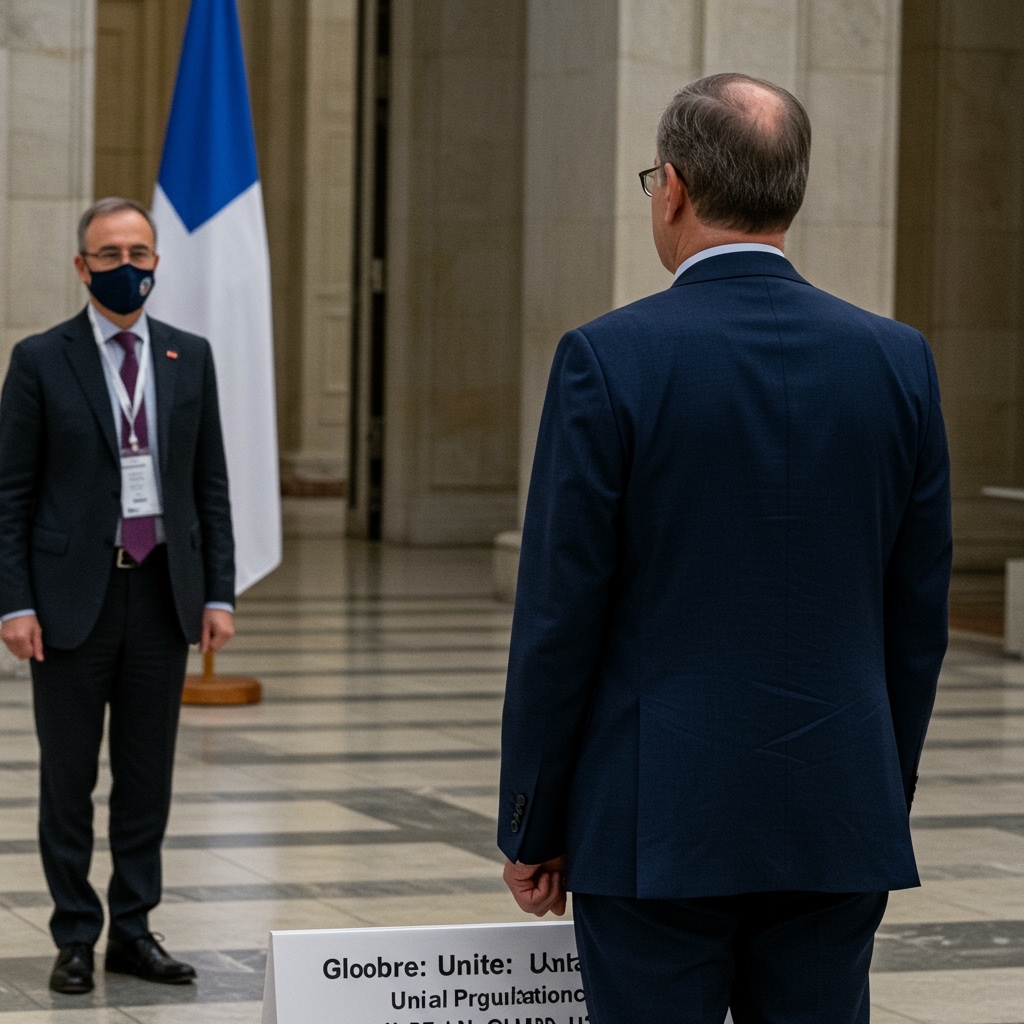Major Blocs Forge Historic Global AI Framework
Geneva, Switzerland – In a pivotal moment for the future of artificial intelligence governance, a formidable coalition of the world’s leading economic blocs today jointly unveiled the Universal AI Regulation Framework (UARF). Announced in Geneva, this landmark agreement brings together the collective influence and expertise of the European Union, United States, Japan, South Korea, United Kingdom, Canada, and Australia, signaling a unified global approach to the challenges and opportunities presented by rapidly advancing AI technologies.
The unveiling ceremony featured prominent international figures, including EU Commissioner Věra Jourová and US Secretary of Commerce Gina Raimondo, who underscored the necessity of international cooperation to shape a predictable and trustworthy environment for AI development and deployment. The UARF represents the culmination of intensive negotiations and collaborative efforts among these key players, each representing significant contributions to the global tech ecosystem and holding distinct but often overlapping concerns regarding AI ethics, safety, and economic impact.
Core Pillars of the UARF
The UARF is designed to serve as a foundational set of global standards, specifically targeting critical areas of AI development and deployment. At its heart lie principles aimed at ensuring responsible innovation while mitigating potential risks. Key components of the framework include stringent requirements for AI transparency, mandating that systems should be understandable and their decision-making processes, where feasible, be explainable. This aims to build user trust and enable accountability.
Furthermore, the framework establishes rigorous standards for safety testing. Recognizing the increasing complexity and potential autonomy of AI systems, the UARF requires developers and deployers to conduct thorough testing protocols to identify and mitigate risks before widespread deployment. These tests are intended to cover various scenarios, ensuring AI operates safely and reliably, particularly in sensitive applications.
Perhaps one of the most impactful provisions is found under Section 3b, which specifically addresses liability for autonomous systems. This section aims to clarify responsibilities when AI systems cause harm or damage, a critical legal and ethical challenge posed by increasingly independent AI agents. By setting clear guidelines on liability, the UARF seeks to provide legal certainty for businesses and adequate protection for individuals, fostering responsible development by ensuring accountability is built into the design and operation of AI.
Addressing Global Challenges and Fostering Innovation
The primary motivation behind the UARF is to harmonize international approaches to AI regulation. Without a common framework, there is a significant risk of regulatory fragmentation, where different countries or blocs adopt conflicting rules. Such fragmentation could stifle innovation, create market barriers, and make it difficult for businesses operating globally to comply with a patchwork of disparate requirements. The UARF aims to prevent this by providing a coherent and interoperable set of standards that participating nations can integrate into their national legal frameworks.
Beyond preventing fragmentation, the framework is explicitly designed to foster responsible innovation. By establishing clear rules of the road regarding safety, transparency, and liability, the UARF provides developers and businesses with the predictability they need to invest in and build advanced AI systems confidently. The focus is not on hindering progress but on channeling it towards applications that are beneficial to society, adhere to ethical principles, and minimize potential harms.
The collaboration among the European Union, United States, Japan, South Korea, United Kingdom, Canada, and Australia is particularly significant. Together, these entities represent a substantial portion of the global economy, hold significant technological expertise, and are key markets for AI products and services. Their joint commitment to the UARF lends it considerable weight and increases the likelihood of broader international adoption over time.
Implementation Timeline and Global Impact
The UARF is not intended for immediate, overnight implementation. The agreement outlines a phased approach, allowing participating nations and relevant stakeholders time to adapt. Phased implementation of the UARF is scheduled to begin in the third quarter of 2025. This timeline provides a crucial window for national legislatures to adopt necessary laws and regulations, for industry to develop compliance protocols, and for international bodies to establish mechanisms for monitoring and enforcement.
The impact of the UARF is expected to be far-reaching, affecting AI developers and deployers worldwide. Companies building or utilizing AI technologies, regardless of their location, will likely need to align their practices with the UARF standards if they wish to operate in or partner with entities within the participating blocs. This global reach underscores the framework’s ambition to set a de facto international benchmark for responsible AI.
The unveiling in Geneva marks a critical step towards establishing a globally coherent and trustworthy ecosystem for artificial intelligence. While the technical details of implementation and enforcement will unfold over the coming months, the UARF signals a clear commitment from major global powers to collaboratively shape the future of AI, ensuring it serves humanity safely and responsibly.





